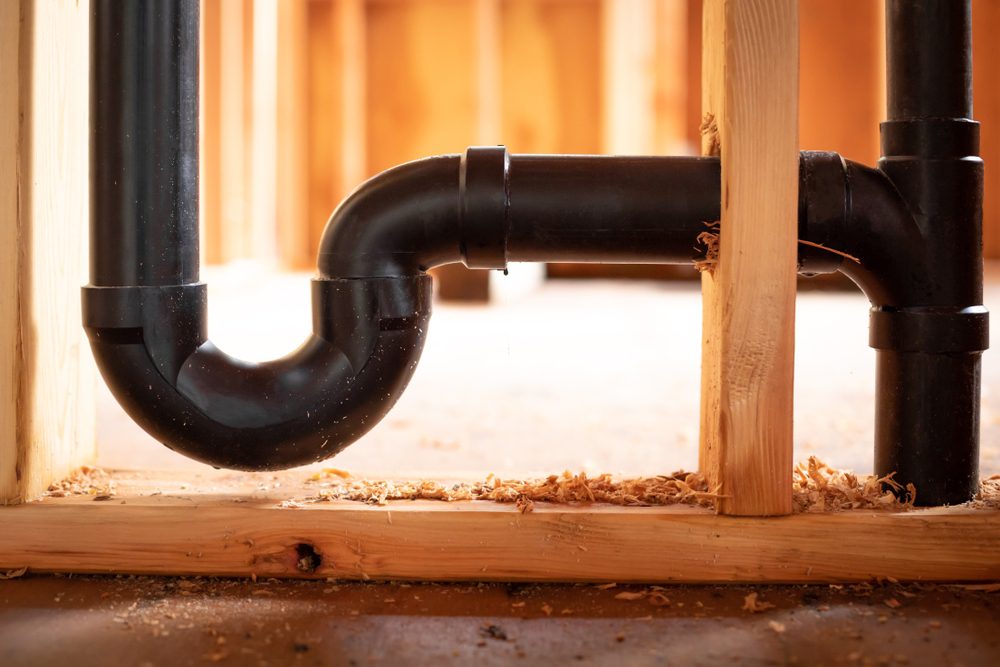This post in the next paragraphs in relation to What Is a Plumbing Vent and Why Is It Important is particularly enjoyable. Give it a try and draw your own personal ideas.

Correct air flow in plumbing systems is typically neglected, yet it is vital for keeping the functionality and safety of your home's plumbing. Air flow aids manage air pressure, prevent the buildup of unsafe gases, and ensure the efficient removal of waste. In this guide, we will certainly explore the significance of appropriate plumbing air flow, exactly how it functions, and the benefits it gives your plumbing system.
Understanding Ventilation in Plumbing
Ventilation in pipes describes the network of pipes that enable air to flow with the water drainage system. These vents offer several functions, including regulating air pressure within the pipes, stopping drain gases from getting in the home, and helping in the smooth flow of wastewater.
Just How Ventilation Functions in Plumbing Equipments
Atmospheric Pressure Regulation
Proper ventilation maintains well balanced air pressure within the pipes system. When water flows through pipes, it displaces air. Without adequate ventilation, this displacement can develop adverse pressure, causing slow down drains or siphoning of water from traps, which can create unpleasant odors to seep into the home.
Stopping Sewage System Gas Build-up
One of the most crucial functions of pipes vents is to avoid sewer gases, such as methane and hydrogen sulfide, from collecting within the home. These gases can present severe wellness risks and are very combustible. Vent pipes allow these gases to leave safely outside.
Assisting in Waste Elimination
Air flow aids in the reliable elimination of wastewater by preventing airlocks in the drain system. When air can flow openly through the vents, it enables water and waste to flow efficiently with the pipes, lowering the risk of obstructions and backups.
Sorts Of Pipes Vents
Key Heap Vent
The major stack air vent, likewise known as the vent pile, is the key air vent in a pipes system. It extends from the major drainpipe line up through the roof covering, enabling gases to leave and fresh air to enter the system.
Branch Vent
Branch vents connect to the major pile vent and serve individual components, such as sinks, bathrooms, and showers. These vents ensure that each component has ample air flow to work appropriately.
Air Admission Shutoff (AAV).
An Air Admittance Shutoff (AAV) is a one-way shutoff that permits air to go into the plumbing system without the need for a conventional vent pipe prolonging with the roof. AAVs are commonly used in renovations or areas where installing a basic vent is unwise.
Signs of Poor Air Flow in Pipes.
Slow Draining Fixtures.
If your sinks, bathtubs, or bathrooms are draining pipes gradually, maybe a sign of bad ventilation. Poor air circulation can produce a vacuum cleaner effect, making it hard for water to drain pipes effectively.
Gurgling Seems.
Gurgling audios coming from drains are often a result of air being drawn through water traps due to unfavorable pressure in the pipes. This is a clear indicator of inadequate ventilation.
Unpleasant Odors.
Sewer odors inside your home are a red flag that your plumbing system is not correctly aerated. This can indicate that sewer gases are not being effectively aired vent outside, causing potentially dangerous problems.
Usual Ventilation Blunders.
Inadequate Vent Sizing.
Making use of undersized air vent pipelines can cause bad air flow and pressure discrepancies in the system. It's necessary to make use of vents that meet the specific requirements of your pipes system.
Improper Vent Positioning.
Putting vents also far from the components they offer can reduce their efficiency. Appropriate positioning makes certain that air can flow easily and successfully via the system.
Ignoring Code Demands.
Building codes offer certain guidelines for pipes air flow. Ignoring these codes can lead to a system that fails to operate appropriately and may lead to pricey repair work or carcinogen.
Advantages of Appropriate Air Flow.
Boosted System Effectiveness.
Properly aerated pipes systems run much more successfully, with fewer obstructions, faster draining pipes, and much less stress on the pipelines. This efficiency expands the life-span of the pipes system.
Improved Air High Quality.
By protecting against sewer gases from entering your home, correct ventilation adds to much better interior air quality, making your living setting healthier and extra comfortable.
Preventing Water Damage.
Adequate ventilation aids stop water from being siphoned out of catches, which can bring about sewage system gases getting in the home and creating water damages with time.
Steps to Make Certain Appropriate Air Flow.
Consulting Plumbing Codes.
Always get in touch with local pipes codes when creating or modifying your pipes system. These codes provide the needed guidelines for appropriate venting and guarantee your system meets security standards.
Normal Assessment and Upkeep.
Regular examinations can help recognize possible air flow issues prior to they come to be significant problems. Upkeep tasks, such as cleansing air vent pipes and looking for obstructions, are crucial for keeping the system in good working order.
Specialist Installment.
For new installations or significant alterations, it's a good idea to employ a specialist plumbing professional. They have the expertise to guarantee the ventilation system is correctly developed and set up according to code.
Final thought.
Correct ventilation is a crucial component of any pipes system, guaranteeing that it works effectively and securely. By recognizing the significance of ventilation, identifying the indicators of inadequate ventilation, and taking steps to maintain your system, you can prevent expensive concerns and safeguard your home's air top quality.
What is a Plumbing Vent and it's used for?All plumbing systems in residential and commercials construction have a plumbing vent. It doesn’t just vent unwanted odors from the drainage system to the outside; it actually serves an important purpose by supplying air to the system.
The plumbing drainage system is actually called a drainage, waste and vent (DWV) system. When water flows down the piping, an air supply (vent) is needed to allow the water to flow. Think of the vertical pipe as a drinking straw. If you plug the top end of a straw, liquid won’t drain from it.
The DWV system in your building consists of a series of pipes connected to each fixture; they extend above each fixture, and the system terminates at an open pipe that extends through the roof. This piping allows air into the system and prevents unbalanced pressures in the piping.
?The vent also prevents the system from drawing water out of a trap at the fixture with the characteristic “glug-glug-glug” as the drain gasps for air. Plumbing traps should drain smoothly and never “glug” or gasp for air.
If you have a drain that empties slowly or gurgles as it drains, this may indicate a venting problem. If you flush a toilet and the sink gurgles, there’s definitely a vent problem. It is good idea to have a Plumber check this.
https://www.ameliashomeinspection.com/blog/what-is-a-plumbing-vent-and-its-used-for

I'm very interested in The Upsides of Proper Ventilation in Plumbing Design and I am praying you enjoyed my piece. Do you know another individual who is inquisitive about the topic? Be sure promote it. Many thanks for being here. Return soon.
Click Here To Read More